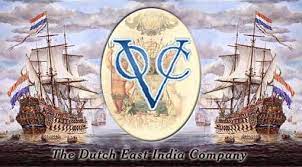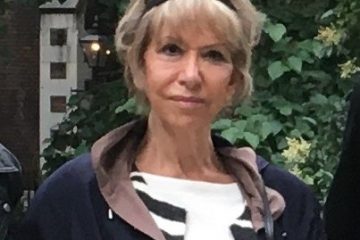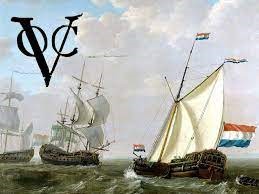[Cape Leeuwin to North West Cape]
Central and Upper West Coast 1629 – 1697
The Voyage of the Batavia
Journal – Francisco Pelsaert
Recording Navigator: F Pelsaert 1629
“The Journals of Francisco Pelsaert”
in H Drake-Brockman 1982
Voyage to Disaster,
Sydney: Angus and Robertson, pp.107-254.
pp.129-30 [240, Red Bluff area area, 14 June 1629]
[Our men] Saw also four men creeping towards them on hands and feet. When our folk, coming out of a hollow upon a height, approached them suddenly, they leapt to >>130 their feet and fled at full speed, which was clearly seen by us in the boat; they were black savages, entirely naked, without any cover.
p.130 [ca 220 40’, Ningaloo, 16 June 1629]
We next saw eight black men, each carrying a stick in his hand, and these approached to the distance of a musket shot, but when we went towards them they ran away and we could not get them to stop where they were so that we might come up to them.
p.237 [280 13’, Hutt River, 16 November 1629]
Here we saw several smokes rising up …
They [shore party] also saw many footprints of people and small footpaths running to the Mountains, with many smokes, but the blacks kept themselves hidden and did not show themselves to anyone.
Emeloordt 1658
Documentary Source other than original Journal
In R H Major 1859
“Account of the wreck of the ship ‘De Vergulde Draeck’ on the Southland … … drawn up and translated from authentic MS copies of the logbooks in the Royal Archives in Holland”
In R H Major 1859
Early Voyages to Terra Australis,
London: Hakluyt Society, pp.77-88.
pp.81 [crew of Emeloort searching for survivors of the Vergulde Draeck]
The crew of the Emeloordt also saw at different points five black men of extremely tall stature, without however daring to land there.
p.82 [crew of Emeloort searching for survivors of the Vergulde Draeck]
The galliot Emeloordt sighted land … … on 8 March, 300 25’ …. … They also saw smoke rising towards the ESE … … At night a fire was seen at NE by E
p.83 [crew of Emeloort searching for survivors of the Vergulde Draeck]
On the 9th, a fire on shore was again seen and answered with a signal of three guns, and the boat was launched with a crew of nine … … on their approach the smoke and fire disappeared …
p.83 [crew of Emeloort searching for survivors of the Vergulde Draeck]
On the 10th, the boat was again sent ashore, and a large fire again seen on the beach, at the same place as on previous day
Fires at four different points were again seen from the ship during the night
p.83 [crew of Emeloort searching for survivors of the Vergulde Draeck]
The boat’s crew related that they had come across three huts, and had encountered five persons of tall stature and imposing appearance, who made signs for them to approach; this, however, from distrust of their intentions, they did not venture to do. On their returning again to the boat these people followed them down to the beach, but were afraid to enter the boat.
p. 85 [Waeckende Boey searching for survivors of the Vergulde Draeck]
On the 28th [February, 1658], having arrived at 300 40’, and several fires having been seen on land, the boat was sent out. The steersman reported that nothing had been observed but a great smoke
Journal – Aucke Pieter Jonck
Recording Mariner: A P Jonck 1658
Extracts – “Log of the Emeloordt”
in J Henderson 1985
Marooned
Perth: St George Books, pp.81-94.
p.87 [north of Jurien Bay, 8 March 1658]
At once we saw smoke rising in the ESE and also in the E …
p.87 [north of Jurien Bay, 9 March 1658]
We remained lying here throughout the night and saw a fire being lit NE by E
[Another fire observed] to which we replied from the ship with three guns, whereupon they lit more
p.87 [north of Jurien Bay, 9 March 1658]
But the moment they [shore party] touched the shore, the smoke of fire was extinguished
p.88-9 [south of Jurien Bay, report of shore party, 11 March 1658]
We had been near three houses, and five persons of distinction and of very tall build were there who beckoned us … and sympathetically put their hands under their heads as a signal of sleep.
But wee, not being simple enough to put ourselves in the hands of such savage people as we have had good example [or warning], returned to our boat.
p. 89 When we were in our boat they came up on to the beach. We signalled with our lantern and flag that they should come to us, but they were very timid and we couldn’t get them near our boat. They departed at dusk and we rested all night in the boat.
saw at night many fires being lit.
Journal – Willem de Vlamingh
Recording Mariner: W de Vlamingh 1696-7
“The Geelvinck Journal”
in G Schilder (ed.), C de Heer (trans.) 1985
Voyage to the Great South Land,
Sydney: Royal Australian Historical Society, pp.102-145.
p.131 [Wittecarra Gully, 25 January 1697]
our seur came back on board … and reported to have seen nothing but 5 huts and many footprints of people and animals … but did not see any human being.
Journal – Mandrop Torst
M Torst 1696-7
“The Nijptangh Journal”
in G Schilder (ed.), C de Heer (trans.) 1985
Voyage to the Great South Land,
Sydney: Royal Australian Historical Society, pp.146-162.
p.156 [off Jurien Bay, 15 January 1697]
Saw much smoke and vapour rising up in several places.
p.156-7 [Hutt Lagoon, 23 or 24 January 1697]
Our upper-steersman, returning aboard about noon, reported he had seen three or four people on the beach and several more on the dunes, being naked, black of colour and of our stature, but they had been unable to reach them on (pp.157) account of the surf;
p.158 [Wittecarra Gully, Wittecarra Spring, 25-27 January 1697]
the commander of the soldiers … … found fresh water as well as a hut and footprints
We also passed this night [26-7 January] on shore, camped again by the waterhole mentioned, without, although having split up, finding either humans or animals
Documentary Sources other than original Journals
“Letter from Nicolaes Witsen to Gisbert Cusper, undated (1698)”
in G Schilder (ed.), C de Heer (trans.) 1985
Voyage to the Great South Land,
Sydney: Royal Australian Historical Society, pp.214-5.
p.215
On the South Land they saw black naked people but could not come near them because they were fleet of foot.
———————————————–
“Nicolaes Witsen’s account of de Vlamingh’s voyage” N Witsen 1705
Noord en Ooste Tartarye
Amsterdam: Francois Halma, pp.179-183.
in G Schilder (ed.), C de Heer (trans.) 1985
Voyage to the Great South Land,
Sydney: Royal Australian Historical Society, pp.216-221.
p.218
once at twenty seven degrees southern latitude skipper Vlamingh saw five huts close together, about one hour’s distance from the beach, one of which was made of clay with a roof sloping down on two sides. About the huts hot coals or burning wood were seen with fish lying on or near to it to be cooked, and also some fish which someone had eaten and had left the bones, so that the people must have recently left it:
p.219
Further north of their first point of arrival they encountered ten naked people, pitch black, but with short curly hair, who all fled and could not be overtaken however much they tried.
————————————————
“Extract from a letter from Nicolaes Witsen to Dr Martin Lister, 3 October 1698”
in G Schilder (ed.), C de Heer (trans.) 1985
Voyage to the Great South Land,
Sydney: Royal Australian Historical Society, pp.221-2.
pp.221-2
Our people had seen [p.222] but twelve of the natives, all as black as pitch, and stark naked, so terrified that it was impossible to bring them to conversation, or a meeting:
Produced by Australia On The Map, Australasian Hydrographic Society


